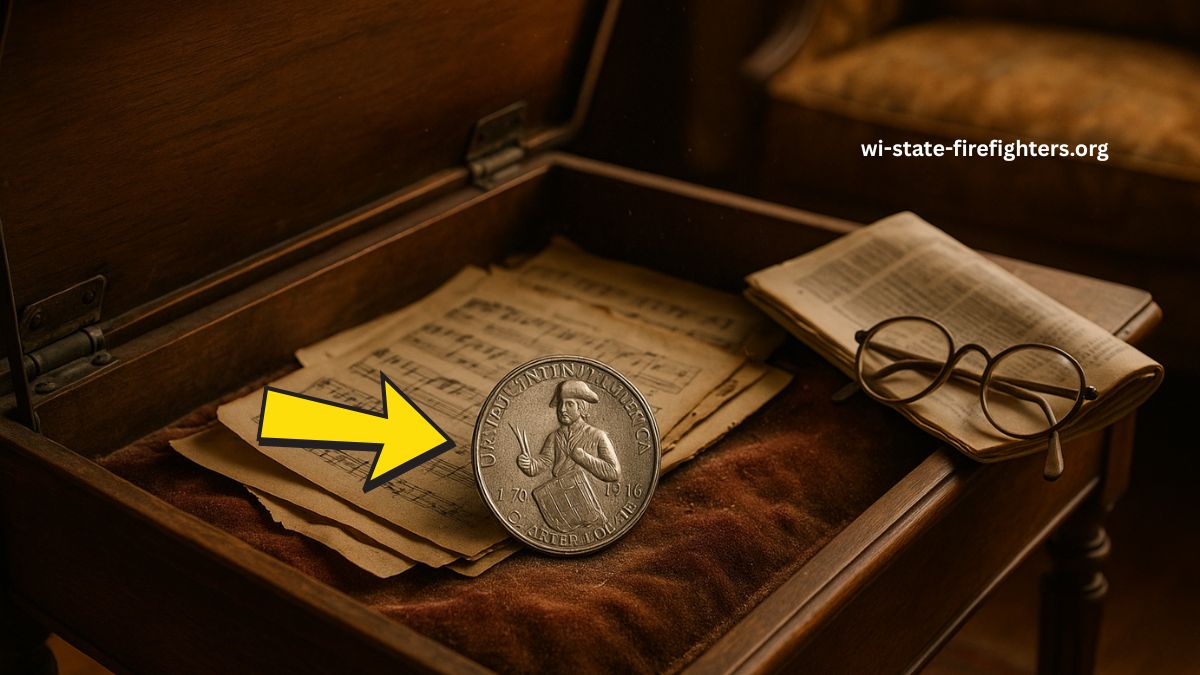In an astonishing turn of events, a seemingly ordinary piano bench became the hiding spot for a rare Bicentennial quarter, which recently fetched a staggering $46,500 at auction.
This unexpected discovery has captivated coin collectors and enthusiasts alike, shedding light on the hidden treasures that may lie in everyday places.
The Discovery
While cleaning out an old family piano bench, a homeowner stumbled upon a 1976 Bicentennial quarter. Initially perceived as just another coin, a closer inspection revealed its unique characteristics, prompting the owner to consult a numismatic expert.
The coin’s distinct features and pristine condition confirmed it as a rare find, leading to its impressive sale price.
Understanding the Bicentennial Quarter
The Bicentennial quarter was minted in 1975 and 1976 to commemorate the 200th anniversary of the United States’ independence. Unlike regular quarters, it features a special reverse design:
- Obverse: Retains the traditional portrait of George Washington.
- Reverse: Showcases a colonial drummer facing left, with a victory torch encircled by 13 stars above. The dual date “1776–1976” is inscribed beneath.
While millions were produced, certain variants and errors make some of these quarters exceptionally valuable.
Factors Contributing to the Coin’s Value
Several elements can elevate the value of a Bicentennial quarter:
- Minting Errors: Coins with anomalies like double dies or off-center strikes are rare and sought after.
- Metal Composition: Some quarters were struck in 40% silver, primarily for collectors, making them more valuable than their copper-nickel counterparts.
- Proof Coins: Specially minted for collectors, these coins have a mirror-like finish and are struck multiple times for clarity.
- Condition: Coins in mint or near-mint condition (graded MS65 or higher) command higher prices.
- Historical Significance: Coins with unique backstories or discoveries can fetch premium prices.
Notable Bicentennial Quarter Sales
| Coin Type | Key Features | Estimated Value |
|---|---|---|
| 1976 Silver Proof | 40% silver composition | $999 million |
| 1976 Double Die Obverse | Doubling on the obverse design | $1 million |
| 1976 No Clad Layer | Missing outer clad layer | $500,000 |
| 1976 D Silver Strike | Denver mint, silver composition | $300,000 |
| 1976 Edge Error | Misprinted or missing edge lettering | $150,000 |
| 1976 Off-Center Strike | Design struck off-center | $120,000 |
| 1976 Proof Cameo | Mirror-like finish with frosted design | $75,000 |
Note: Values are approximate and can vary based on market demand and coin condition.
How to Identify a Valuable Bicentennial Quarter
To determine if your Bicentennial quarter holds significant value:
- Inspect for Errors: Look for anomalies like doubling, missing elements, or off-center designs.
- Check the Edge: Silver quarters have a solid silver edge, unlike the copper-nickel versions which show a copper stripe.
- Weigh the Coin: Silver quarters weigh more (approx. 5.75 grams) compared to standard ones (approx. 5.67 grams).
- Consult a Professional: When in doubt, seek evaluation from a certified coin grading service.
The discovery of a rare Bicentennial quarter in a piano bench serves as a compelling reminder of the hidden treasures that may reside in our everyday surroundings.
Whether you’re a seasoned collector or a curious novice, it’s worth taking a closer look at your spare change—you might just uncover a piece of history worth thousands.
FAQs
Are all Bicentennial quarters valuable?
No, while millions were minted, only those with specific errors, silver composition, or in exceptional condition are considered valuable.
How can I tell if my Bicentennial quarter is silver?
Silver quarters have a solid silver edge without the visible copper stripe. They also weigh slightly more than standard quarters.
Where can I sell a valuable Bicentennial quarter?
Valuable coins can be sold through reputable auction houses, coin dealers, or online platforms specializing in numismatics.

